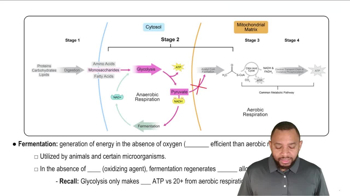What products would you expect from oxidation of the following alcohols?
a. CH3CH2CH2OH
b.
c.
 Verified step by step guidance
Verified step by step guidance Verified video answer for a similar problem:
Verified video answer for a similar problem:


 1:49m
1:49mMaster Alcohol Reactions: Oxidation Concept 1 with a bite sized video explanation from Jules
Start learning